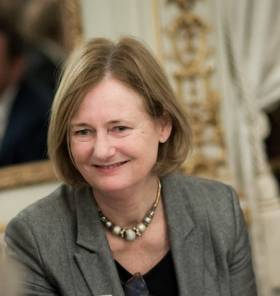Displaying items by tag: Clune Report
Clune-Draft Report Welcomed By ESPO On European Maritime Single Window Environment
#Ports&Shipping - The European Parliament’s Committee on Transport and Tourism on 15th October published the draft report on the Commission’s proposal for a Regulation establishing a European Maritime Single Window environment, which came out on 17 May.
The rapporteur, MEP Deirdre Clune (EPP-Ireland) rightly focuses in her draft report on the harmonisation of data elements and data sets, advocates the cooperation between customs and maritime authorities at both national and Union level and recognises that, even with a fully harmonised data set, competent authorities might for some reasons require additional data. The draft report moreover states that Member states should allow the use of port community systems, as long as those systems are then passing the necessary information to the National Single Window. The rapporteur also stresses the need to provide National Single Windows with a governance dimension and takes a realistic approach concerning the reporting only once principle.
“The draft report of Ms Clune shows a clear ambition to move towards further harmonisation. It will oblige all stakeholders, including port authorities, to set serious steps. It however also recognises the initiatives and investments already in place or under development to achieve a more efficient reporting environment for ships. We believe this draft report further improves the Commission’s draft proposal. The draft report is a solid basis for further discussions. We support the main lines and hope that it can be supported by the Transport committee. This file is already for a long time on the agenda of both EU policy makers and the port and maritime industry. We believe that with these proposals a deal can be reached very quickly with the Commission and the Council, allowing an adoption before the European elections,” says Isabelle Ryckbost, ESPO’s Secretary General.
European ports remain however concerned about the development of a harmonised reporting interface module for the National Single Windows. They fear that such a solution will not be flexible to respond to fast moving technological developments in the field.
The draft report will be discussed in the Transport Committee on 5 November.
The ESPO position on the proposal can be downloaded here.




























































